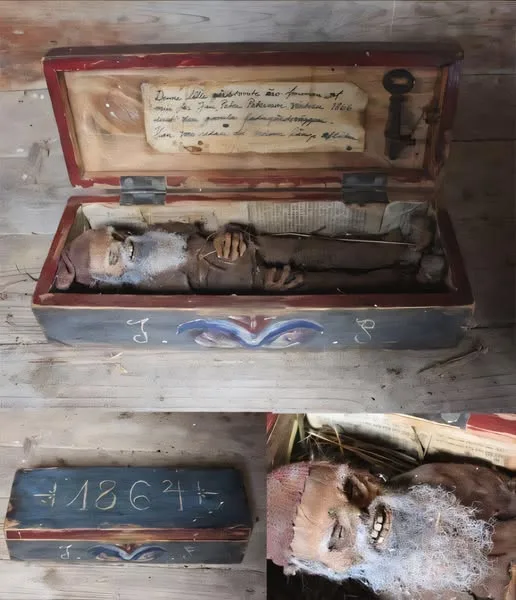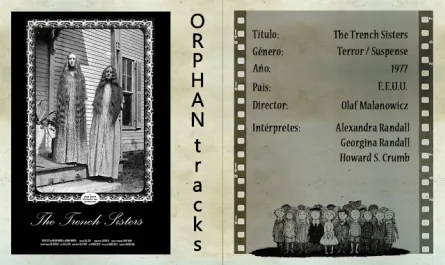Imagine a cold Swedish winter in 1866. Snow blankets the ground, and inside a weathered old barn, a father is going about his chores. Perhaps he’s making repairs, or maybe just tending to the animals, when he makes an extraordinary discovery tucked away within the ancient timbers of a barn wall. Not a lost tool, or a hidden treasure, but something far more enchanting: a “little farmhouse gnome.”

This isn’t just any find; it’s a piece of living folklore brought to life. In Scandinavian tradition, a “tomte” or “gårdstomte” (farm gnome) is a beloved and respected figure. These small, bearded, often red-capped beings are believed to be the unseen guardians of the farm, ensuring the well-being of the livestock and the prosperity of the household. They are mischievous but benevolent, demanding respect and a bowl of porridge on Christmas Eve. To find one, especially in such an intimate, hidden space, would have been profoundly significant.
The inscription accompanying this discovery tells us, “He was by then already long since deceased.” This detail adds a layer of poignant mystery. Was it a small, mummified animal, perhaps a mouse, whose form, distorted by time, resembled a tiny old man? Or was it a lovingly carved wooden figure, a protective charm placed in the wall generations ago, now returned to the light?
Regardless of its true physical form, the interpretation by the father and his family transformed it. This wasn’t just a curiosity; it was a tangible link to the farm’s unseen protector, a piece of the magic that had always quietly existed alongside their daily lives. The fact that it was “long since deceased” only deepens its story, suggesting a history stretching back beyond living memory, a silent vigil kept within the barn’s very structure.
This charming inscription is more than just an account of a find; it’s a beautiful example of how folklore intertwines with everyday life and personal history. It speaks to a time when the line between the seen and unseen was more fluid, when the rustle in the barn or the creak of the floorboards might well be attributed to the watchful eye of a friendly tomte.
Such discoveries remind us of the rich tapestry of human belief and the stories we tell to make sense of our world. They are little whispers from the past, reminding us that sometimes, the most profound treasures aren’t gold or jewels, but the echoes of ancient tales found in the most unexpected places.





